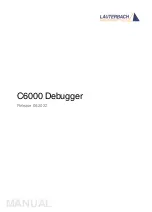
Manual de instalación
y mantenimiento
Installation and maintenace instructions
Instruction pour le montage et l´entretien
INSTALACIÓN
1.1
Desembalar el aparato conservando la base y fijarlo en posición siguiendo la
secuencia (
a-b-c-d
).
1.2
Para conectar la línea del refrigerante, desmontar la tapa lateral lado izquier-
do (vista la unidad desde el frontal - fig. 1 -), o las de ambos lados en los apa-
ratos de doble alimentación (*). Conectar la línea de aspiración
A
respetando
el diámetro del colector de la batería
B
. Montar la válvula termostática en la
línea del líquido
C
y situar el bulbo correctamente en la línea de aspiración.
Montar la tubería de drenaje del condensado a la conexión roscada de la
bandeja, de diámetros 1”- 2”-3” GAS.
1.3
Llevar líneas eléctricas de alimentación independientes a motores y resis-
tencias de desescarche –si las hubiere- y conectar a sus respectivas cajas de
bornas
D
y
E
(fig. 2), según esquemas de pág. 3. La instalación deberá incluir
fusibles de protección o dispositivos análogos, dimensionados en función
de la intensidad del motor. Los cables de alimentación irán protegidos bajo
tubo de plástico o de acero con un grado mínimo de protección IP-34, y
cuando sean de acero deberán estar protegidos contra la corrosión. Además
deberán conectarse al circuito de protección, si bien no deberán utilizarse
como circuitos de protección ni asegurar la continuidad del mismo a través
de éstos. La instalación eléctrica deberá estar provista de un dispositivo
apropiado que permita conectar y desconectar en carga en una sola manio-
bra y deberá ser de corte omnipolar y con una separación entre contactos
suficiente. Ambas instalaciones eléctrica y frigorífica deberán ser realizadas
por personal calificado y respetarán las normas ofíciales en vigor.
MANTENIMIENTO
2.1
Antes de efectuar cualquier intervención, desconectar todas las alimentacio-
nes eléctricas del aparato.
2.2
Controlar el buen funcionamiento de todos los elementos eléctricos (moto-
res y resistencias cada 3 meses).
2.3
Emplear agua o líquidos no agresivos para limpiar la batería y la envolvente,
cuidando no gotear o humedecer las partes eléctricas.
PIEZAS DE REPUESTO
3.1
En pág. 3 se indican motores y resistencias eléctricas.
3.2
Sustitución del motor: Desconectar la alimentación eléctrica de su caja de
bornas
D
. Destornillar los cuatro tornillos de la rejilla.
3.3
Sustitución de resistencia eléctrica de bandeja: desmontar la bandeja prin-
cipal y tapa lateral derecha, desconectar sus terminales de su caja de bornas
E
y retirar la resistencia de sus soportes
F
.
3.4
Sustitución de resistencias eléctricas del paquete aleteado: retirar las tapas
laterales, desconectar la resistencia averiada de su caja de bornas
E
, quitar
anillo de retención, desmontar la resistencia. Para montar la nueva, enfilar
los terminales con una guía rígida
.
INSTALLATION
1.1
Unpack the appliance keeping the base and put it in place following the
sequence (
a-b-c-d
).
1.2
To attach the refrigerant connections, remove the left hand side panel (as
viewed from the front of the unit - fig. 1 -), or those on both sides for double
input appliances (*). Connect the suction line
A
respecting the diameter of
the coil pipework
B
. The expansion valve must be connected to the liquid
line
C
and the bulb must be attached to the suction line. Replace panel.
Connect the water drain pipe to the drip-tray drain connection (1”-2”-3” GAS).
1.3
Take the independent electrical feed lines to the motors and defrost heat-
ers –if included- and connect to their respective terminals
D
and
E
(fig. 2)
following the diagram on page 3. The installation must include protective
fuses or similar devices sized according to motor current. The feed cables
must be protected by plastic or steel tubing IP-34 minimum protection rating:
steel tubes must be corrosion protected. They should also be connected to
the protection circuit must not be used as part of the circuit or to ensure its
continuity. The electrical installation must have an appropriate device to
allow its connection and disconnection under load with a single operation.
It must have omni polarity and a sufficient distance between contacts. Both
electrical and refrigeration installations must be performed by qualified pro-
fessionals and respect official standards.
MAINTENANCE
2.1
Before working on the unit, switch off power supply.
2.2
Check every three-month all the electrical components for faults.
2.3
Use water or non-aggressive cleaner to clean coil-block and casing. Be care-
ful not to wet the electrical connections.
SPARE PARTS
3.1
Refer to page 3 for component parts.
3.2
To replace the motor disconnect the electrical connections on the front of
the motor –motor box
D
- by undoing the retaining screws remove complete
fan assembly. For replacing, repeat procedure.
3.3
To replace drip-tray heating element: remove drip-tray using bolts under-
neath, disconnect the electrical defrost connection box
E
inside the right
hand side of the unit and remove the heater from the support clips
F
. To
replace repeat the procedure.
3.4
To replace the coil-block heating elements, remove both side panels and
disconnect the electrical defrost connection box
E
.
Remove the fixing clips from the element and remove from the left hand
side to replace insert the new elements from the left.
The cables must be pulled through from the right hand side before replacing
the fixing clips. Reconnect and reassemble.
SERIE
S
ICIA
•
ICIM
ICIB
•
ICIT
evaporadores
cúbicos industriales
industrial cubic
units coolers






















